Capital:
Taipei
Currency
Taiwanese Dollar
Best time to visit:
from september to april
In a word:
Ni Hao (hello)
Vaccines
None
At the table:
Bubble tea was invented here so a nice glass is one of the things you absolutely must try but the king of the Taiwanese table is undoubtedly all its street food present in all the night markets!
Essential experiences:
Reach the 89th floor of Taipei 101, one of the 5 tallest skyscrapers in the world; Drink oolong tea at sunset in one of Jiufen's many traditional tea houses; Get lost in one of the many night markets in Taipei, Kaohsiung or Tainan; Be enchanted in the magical Buddhist center of Fo Guang Shan.
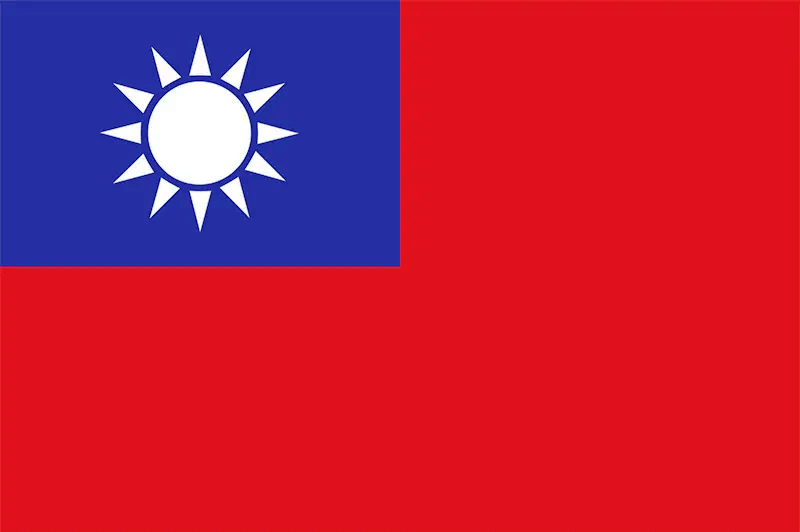
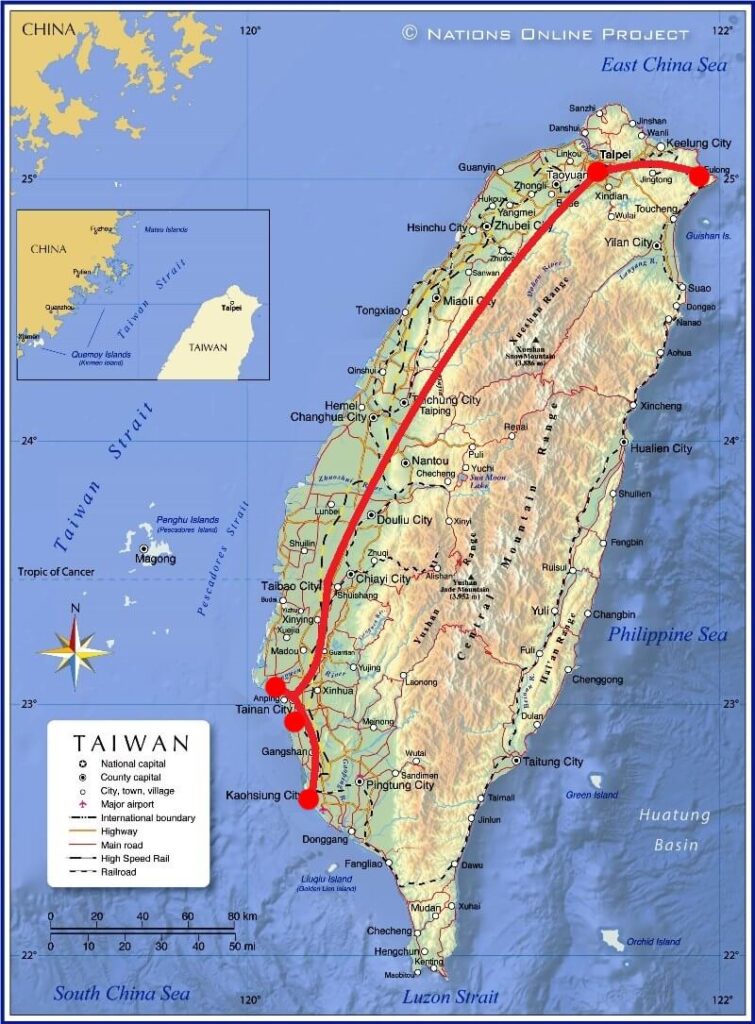
Known for centuries as Ihla Formosa, that is, the beautiful island, because it possesses every wonder of Nature from tropical beaches to mountains that reach 4000 meters up to deep gorges carved into the rock. The tropical climate favors the luxuriant growth of flora and fauna which is why there are so many plants never seen before as well as becoming a real kingdom of butterflies.
We spent the first and last days in the capital to slowly enjoy it as it has so much to offer; aboard the famous High Speed Trains we reached the far south to explore the Kaohsiung area before immersing ourselves in the historic and traditional old capital: Tainan! Very child friendly trip! Below is our travel itinerary in Taiwan.
Our suggested itinerary (12 days) | |
three days: | Taipei (visit Longshan Temple, Bopiliao Historic District, Ximending Area, Watch the Changing of the Guard at the Chiang Kai Shek Memorial); Jiufen (traditional village to taste the famous oolong tea) |
four days: | Kaohsiung (game day at Suzuka Circuit Park; visit to Lotus Pond and all the temples; Fo Guang Shan Buddha Temple; visit to Pier 2 Art Center; night markets: Ruifeng and Liuhe); Cijin Island |
two days: | Tainan (visit to Fort Provintia and Shennong Street); Anping (Treehouse visit) |
three days: | Taipei (visit to Taipei 101; Maokong Gondola for tea in a traditional tea house; night markets: Huaxi, Shilin, Rahoe and Ningxia) |
Taipei is a frenetic, charismatic city. Taipei is full of people, cars and is a true concentration of liveliness. It's not a relaxing place but the food is great, the people are friendly and there are several interesting things to see. Furthermore, it is a perfect crossroads between Chinese, Japanese and Korean cultures with great American influences.
A melting pot of habits and trends waiting to be discovered.
Taipei is a true open-air museum, with 300 years of history to discover. There are Taoist temples, the National Palace Museum with its 5000 years behind it to visit during a city sightseeing.
We move the time forward 7 hours compared to Italy and with the efficient metro we reach the Ximending area where we booked our first hotel: In House Hotel Heritage, we will spend the first three nights here!
This 4-star hotel welcomes its guests with very modern comfort but with a well-researched vintage touch! The furniture in the rooms is stunning, one of a kind and the right mix of old tradition and modern innovation. The continental breakfast will then allow you to taste many traditional dishes!
Ximending is a trendy and very lively shopping area, it is a triangle of super crowded streets with a vibrant energy; there are many little shops that sell a bit of everything, some are even very old and the most renowned are easily identifiable due to the long, orderly queues of kids waiting their turn!
Taiwan is a place that has found its culinary vocation in street food. Eating out here is a real experience. And not only for visitors but also for locals, who often don't use the home kitchen. We go crazy for it!
Today we visit the Longshan Buddhist Temple, dedicated to Guanyin, goddess of mercy.
Inside, believers crowd at the prayer tables, people pray while swinging in the smoke of incense sticks, they throw wooden blocks on the ground to read prophecies or they simply sit under the porticoes in the shadow of dragons and guardian spirits after offered a bit of everything to the hundred deities of the Taoist Pantheon: from snickers to lemon tea as well as noodles, ice cream, biscuits...
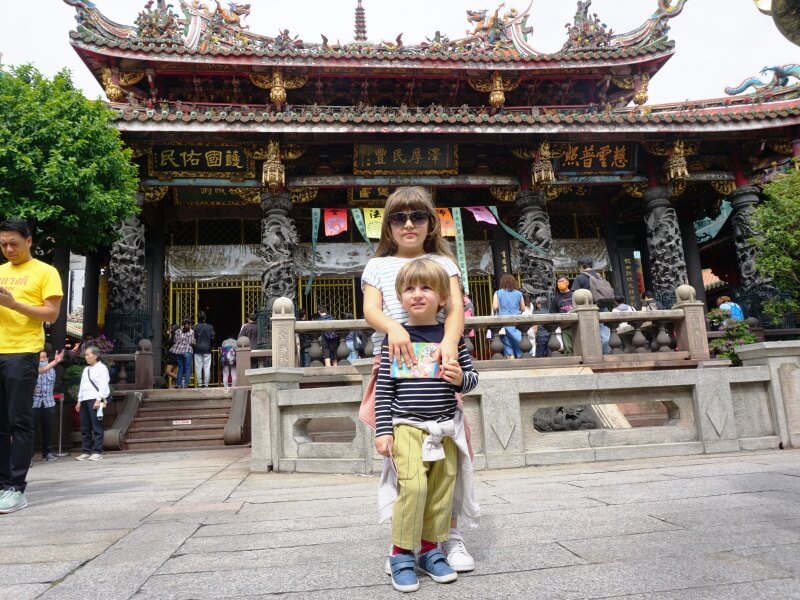
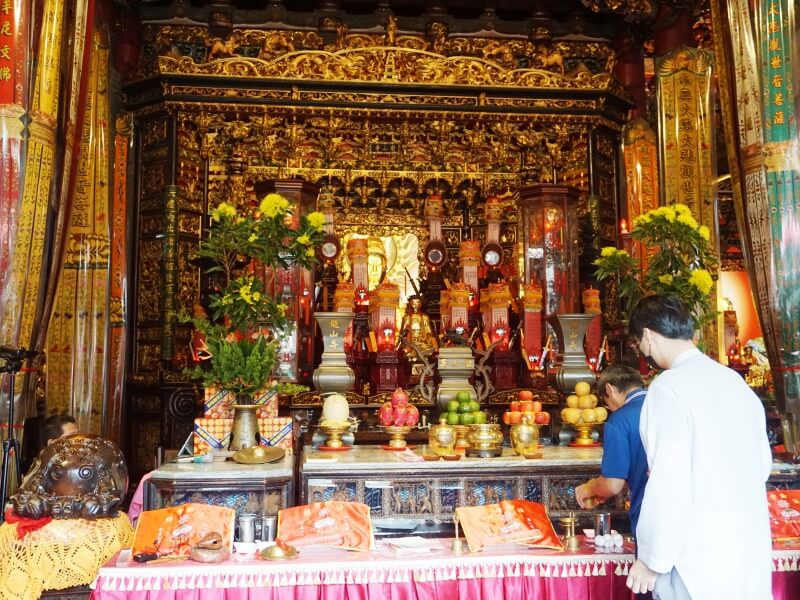

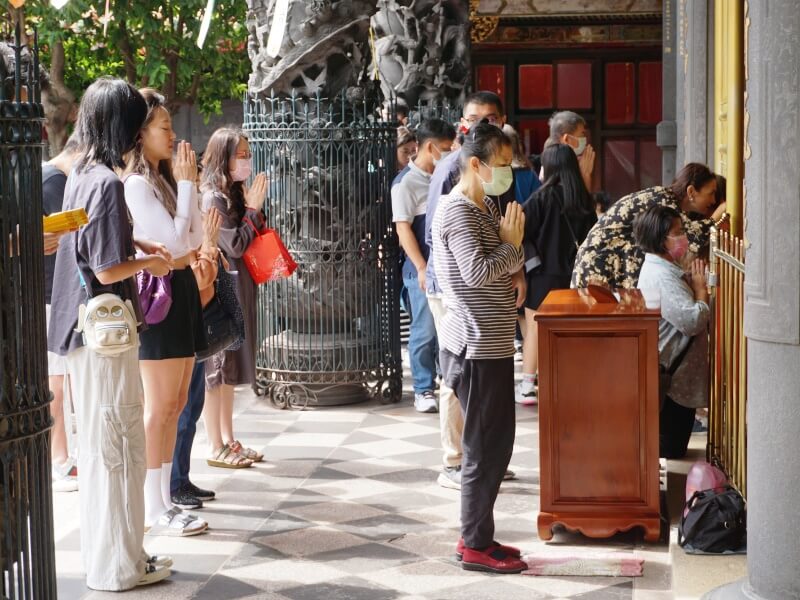

A short distance from the Longshan Temple, stands the Bopiliao Historic Block, in the ancient neighborhood of Menjia. This area where coal was traded was born with the flourishing of the Qing dynasty and evolved during Japanese domination until the post-war period.
Today it is an open-air testimony to the styles that have passed through the city: Southern Fujianese, Japanese to modern Western influences.
It's time for lunch and we stop at "Modern Toilet Restaurant”, a very small, very original restaurant because it will feel like you are having lunch inside a bathroom! The chairs and plates are real toilets, the napkins made from toilet paper, the pillows are shaped like giant poops as are the ice creams! 10 euros per medium dish, normal quality!
By metro we reach the Chiang Kai Shek Memorial, in the center of a park in the Zhongzheng district, in its celebratory grandeur it helps to understand the recent history of the island.
It is enough to see the dimensions of this enormous white pagoda to understand the devotion that still surrounds the figure of the "Generalissimo": with the blue ceramic roof, surrounded by red flowers it recalls the colors of the flag and in the marble walls behind the statue are engraved the names of the three pillars of Chiang's political thought, inspired by Sun Yat Sen's "3 principles of the people": science, democracy, ethics.
The octagonal shape of the roof reminds us that 8 is a number of good luck; the access steps are 89 like the years of life of the father of the country. We advise you to attend the changing of the guard which takes place every hour and is very suggestive.
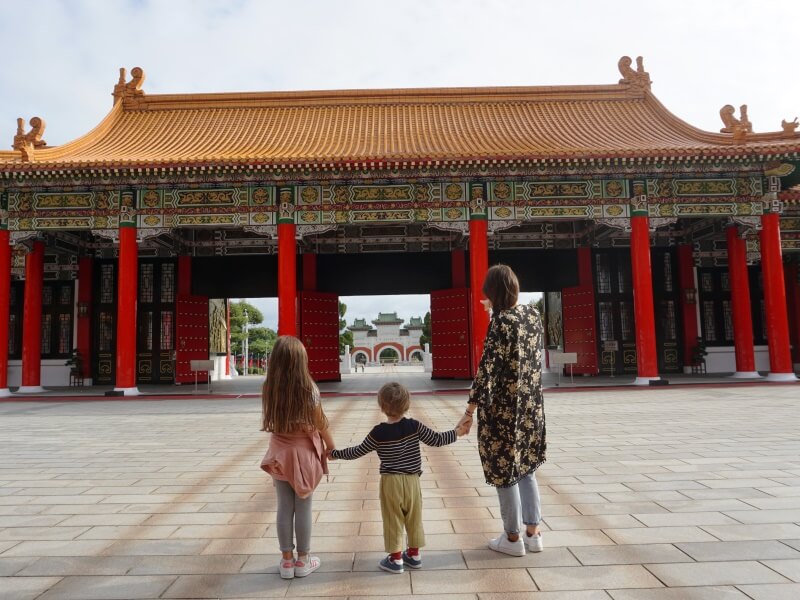
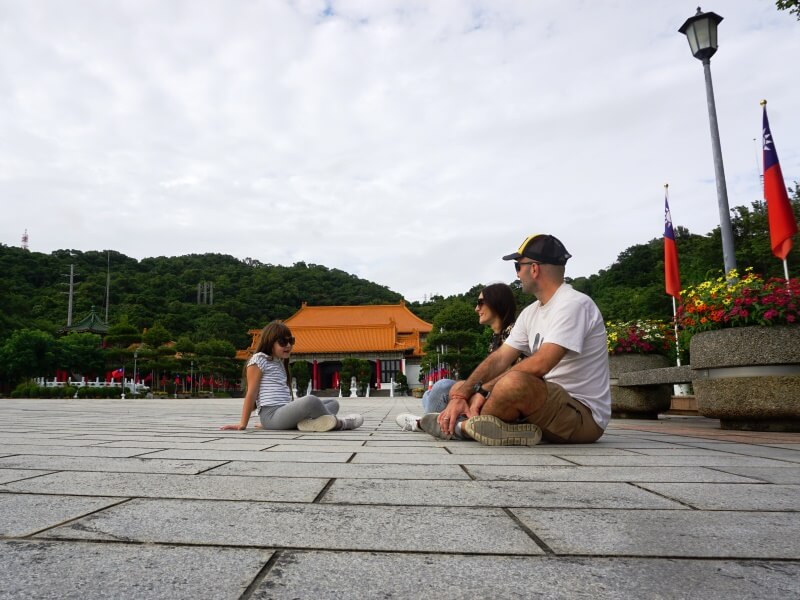
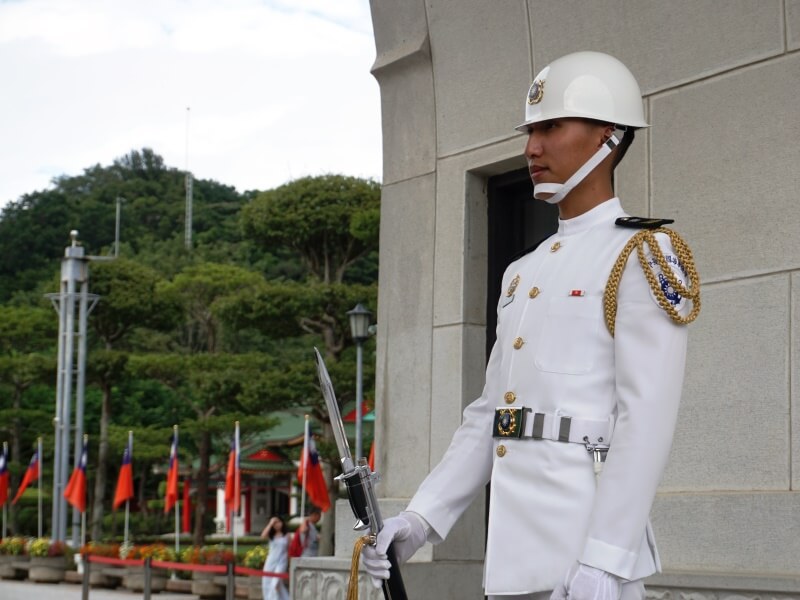
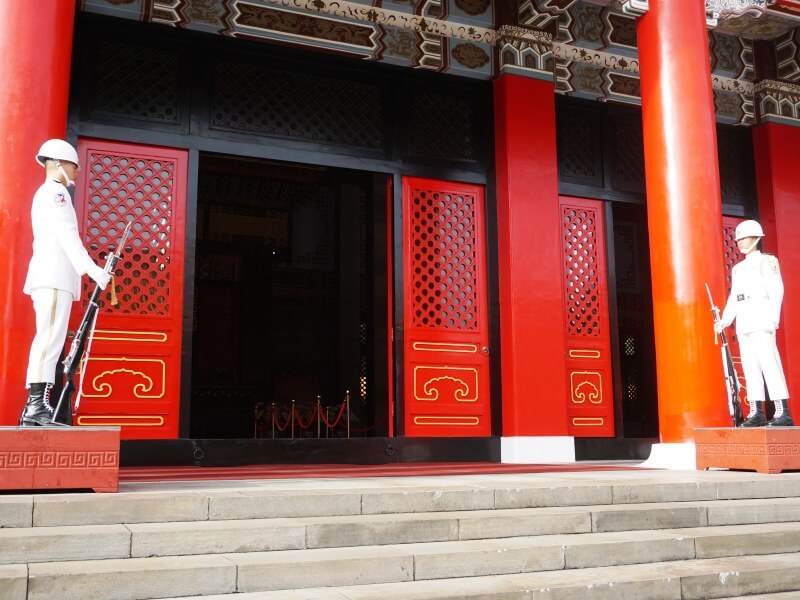
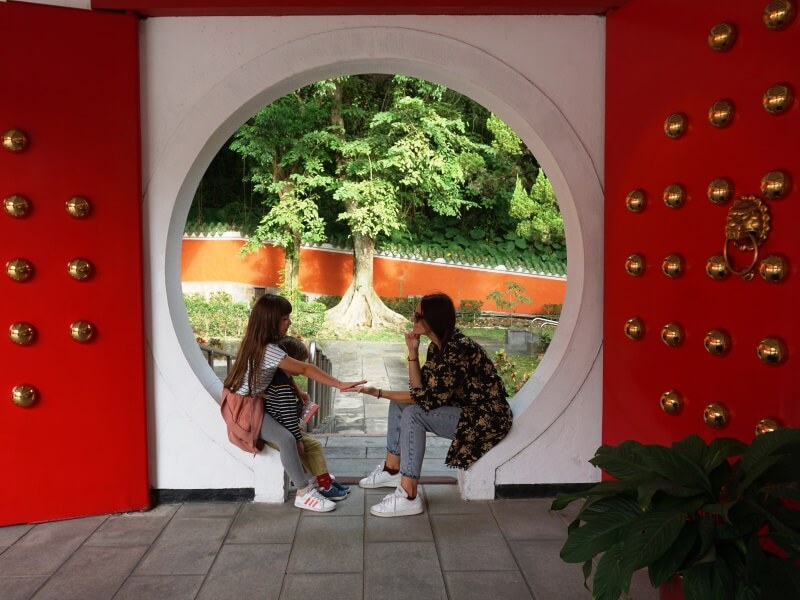
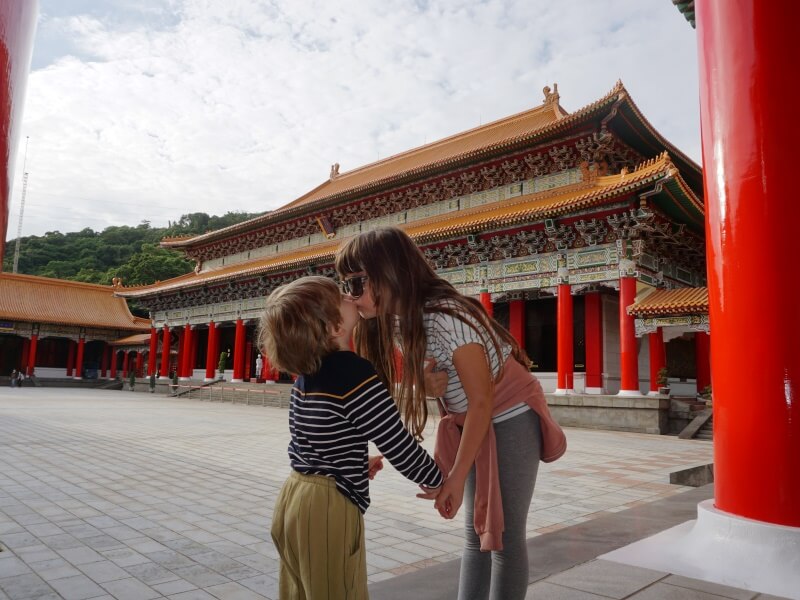
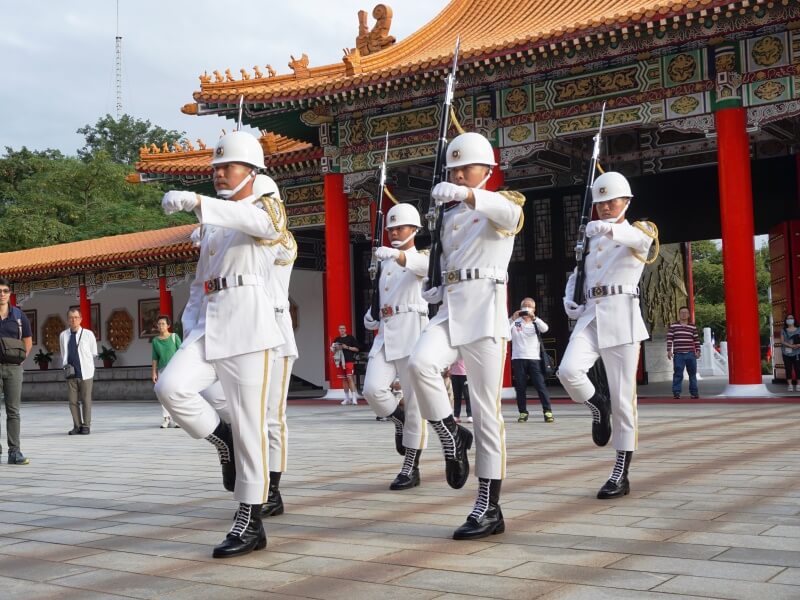
We end the evening wandering in the crowded alleys of the Shilin night market among stalls of smoked duck, pots of noodles and congee, but also some bric à brac where you can buy a statuette of a deity or a jade, we come across small neighborhood Taoist temples.
In an hour by bus from Taipei we reach the splendid Jiufen.
The narrow streets of Jiufen are almost all pedestrianized and framed by old tea houses, ancient and picturesque Chinese-style houses and shops selling all forms of street food!
We decided to spend half a day there after seeing the anime "Spirited Away" by Hayao Miyazaki which, although I didn't confirm it, seems to have been set in this small Taiwanese village.
Growing during the gold rush of the late nineteenth century, it hosted up to 3,000 families of miners, growing with wooden houses clinging to the hill and inserted into each other like Chinese boxes.
After the mines closed in the 1970s, the village has retained a rarefied atmosphere of old China.
The atmosphere is very suggestive and drinking tea while admiring the bay below will remain one of the best memories of this trip.
Returning to Taipei we head to the night market on Huaxi Street, called Snake Market, because it gives the most daring stomachs the thrill of a reptile stew, but it offers everyone an evening walk among the customs of old China, where every occasion is good for sit at a table to eat, at any time.
Excellent excuse to stop at a massage centre, there are many, run by Vietnamese, to relax a bit!
On board the bullet trains we reach the extreme south of the island! Spacious, clean, very punctual, silent... it's a pleasure to travel there!
It is very hot here unlike the capital. We will spend the first night at theHoliday Garden Hotel, a hotel designed specifically for the little ones, perhaps precisely because it is in front of the amusement park: Suzuka Circuit Park.
Here everything is designed for children! From the hall with a pool of colored balls and slides to the mechanics room with plastic reproductions of all the tools!
Our room has a huge train-shaped bed and there are cartoons and comics all over the walls! Even breakfast the next day is baby-proof with nuggets, chips, marshmallows, sweets and even a mini station for making pan cakes!
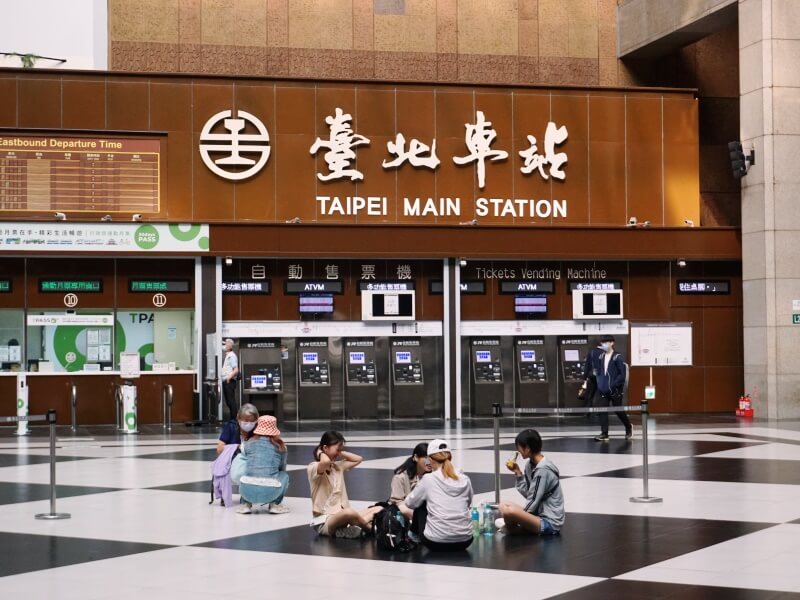
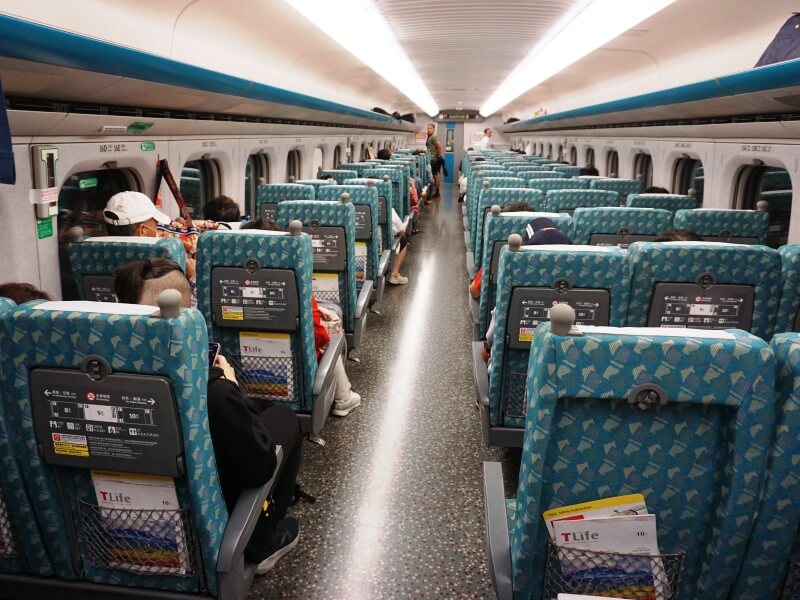

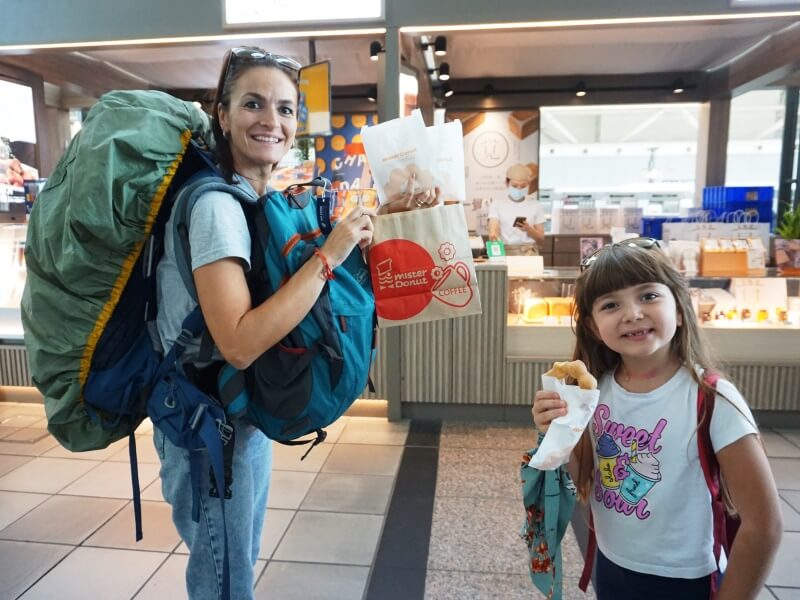
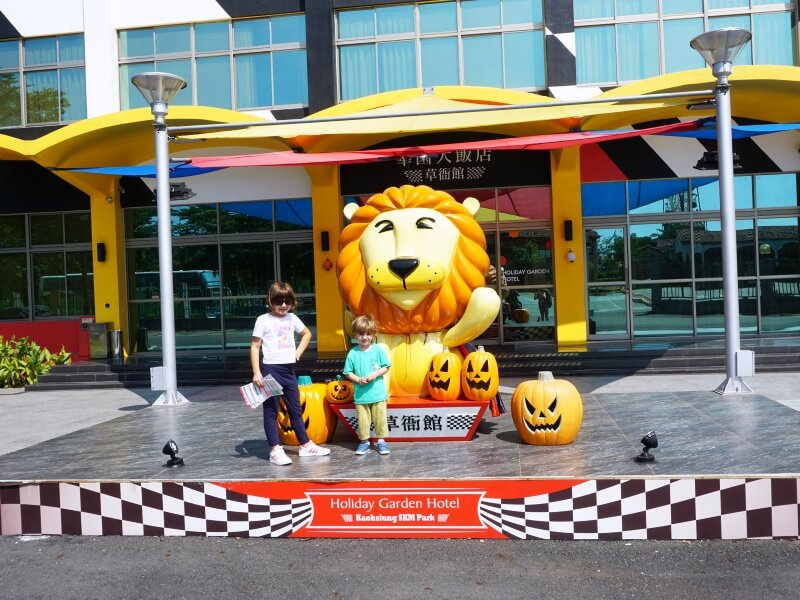
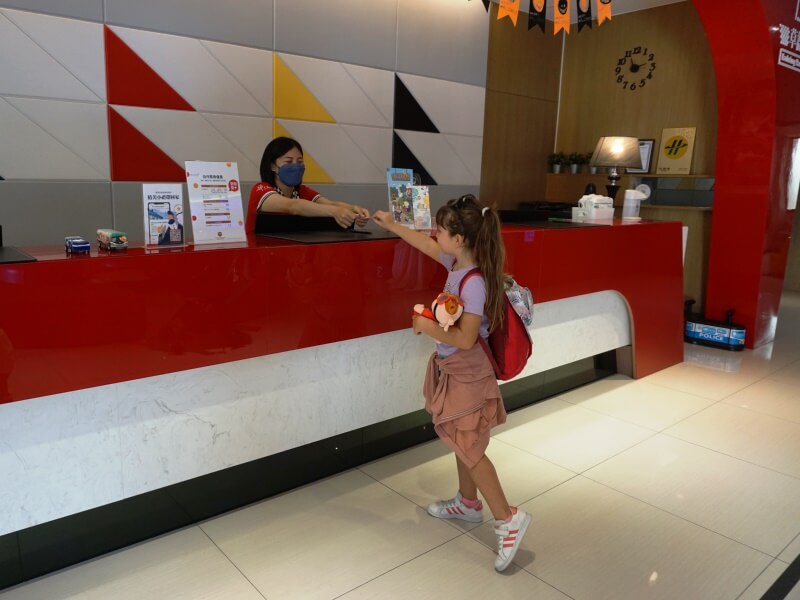
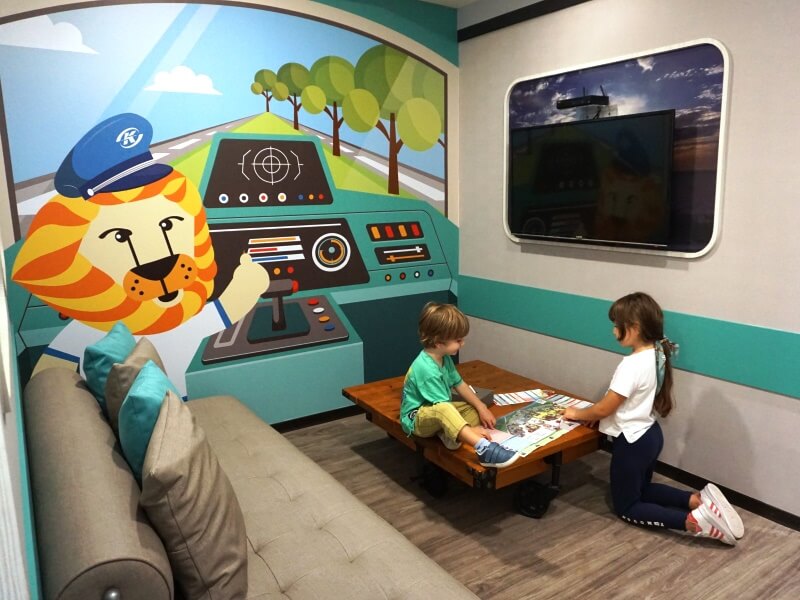
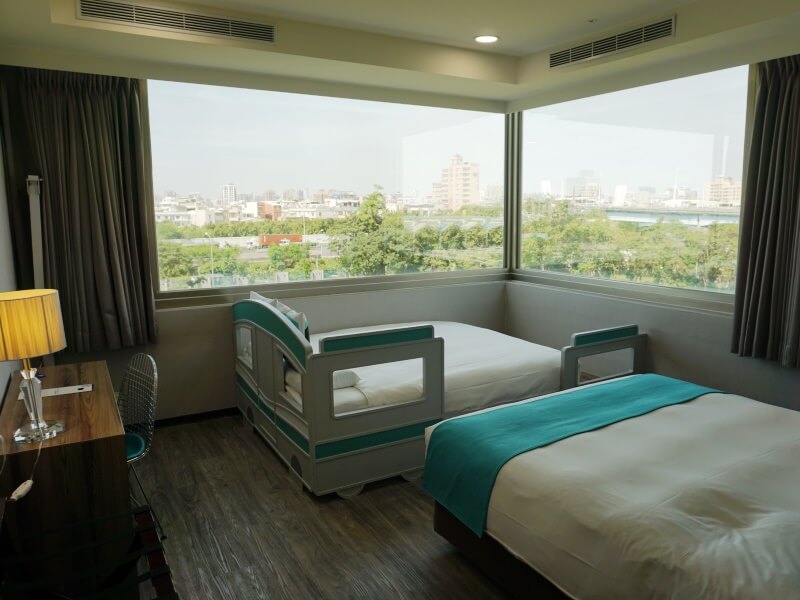
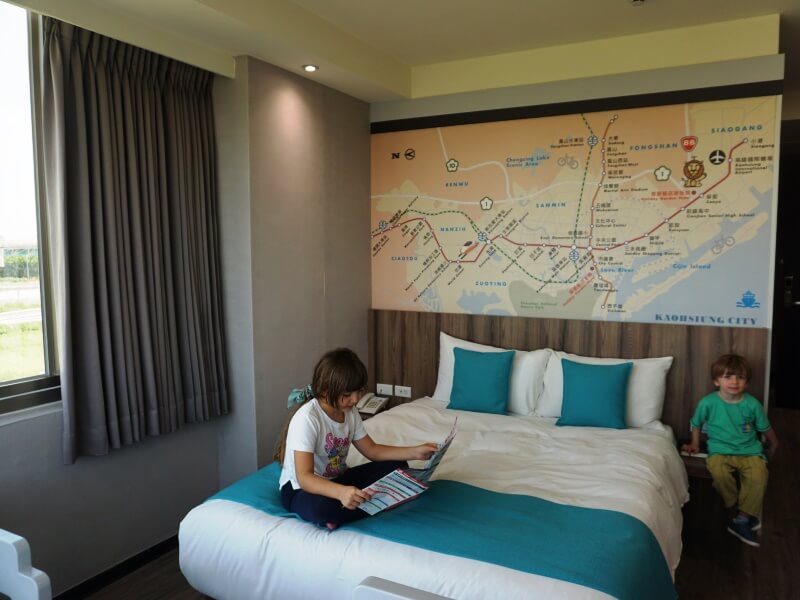
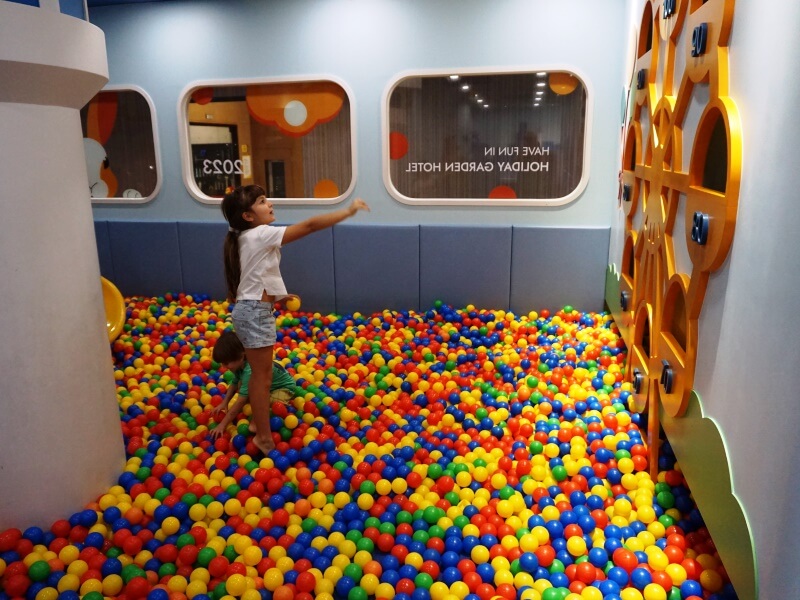
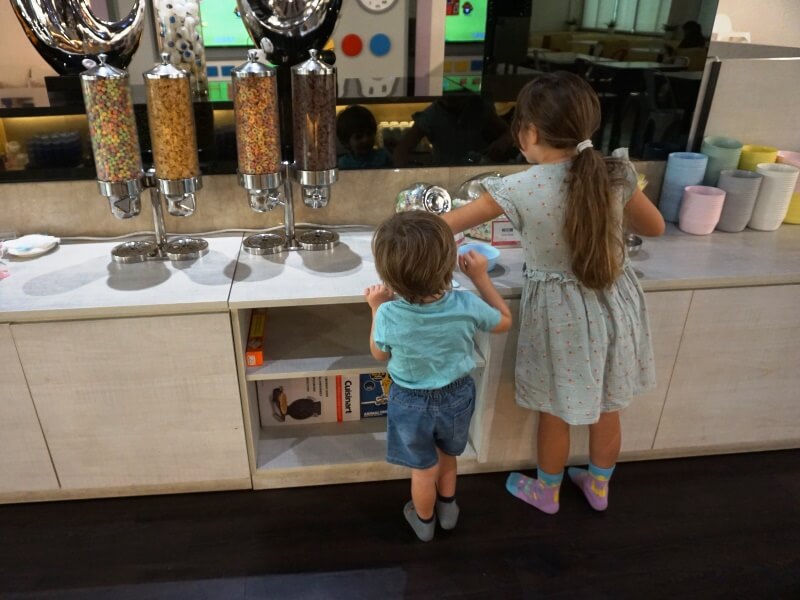
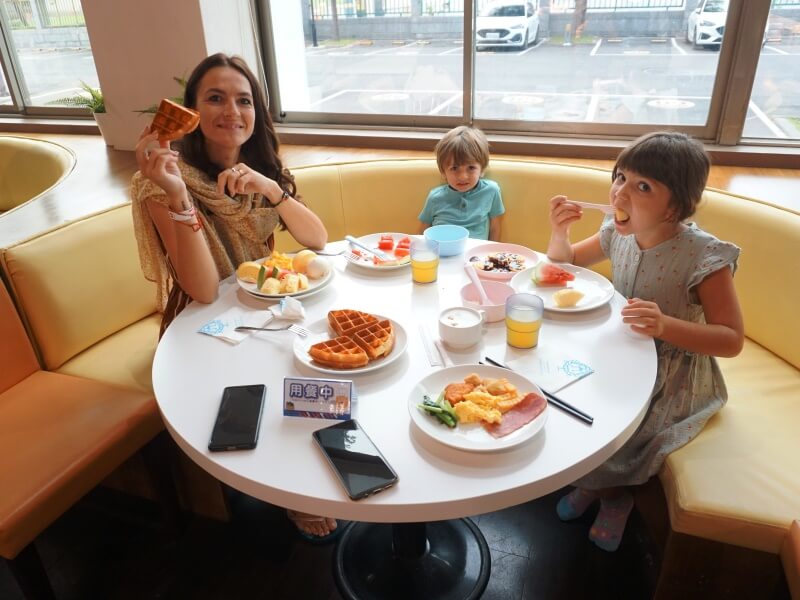
But it's time to completely immerse ourselves in the magical atmosphere of Suzuka Circuit Park! We are warmly welcomed by the wonderful staff who offer us many gadgets from the park while accompanying us to the go kart lesson: yes, Nora and I will race a fast go kart on a real track!
Shortly after, helmet, various protections and gloves worn and with the green light we set off for this wonderful experience on four wheels!
We spend the whole day on colorful trains, crash cars, the Ferris wheel up to the ancient style carousel...
Today we move towards the center, area R14, where we will spend the next three days at the marvelous Hotel R14. We are welcomed by Stifie, the Marketing Manager, who shows us the beautiful structure: everything is in the right place, large spaces in a minimalist style but with great elegance!
Awarded as one of the most authoritative hotels for vegetarians, it offers a menu ONLY for vegetarians!
Our room has a huge view of the park below where, every morning, friendly elderly ladies practice tai chi.

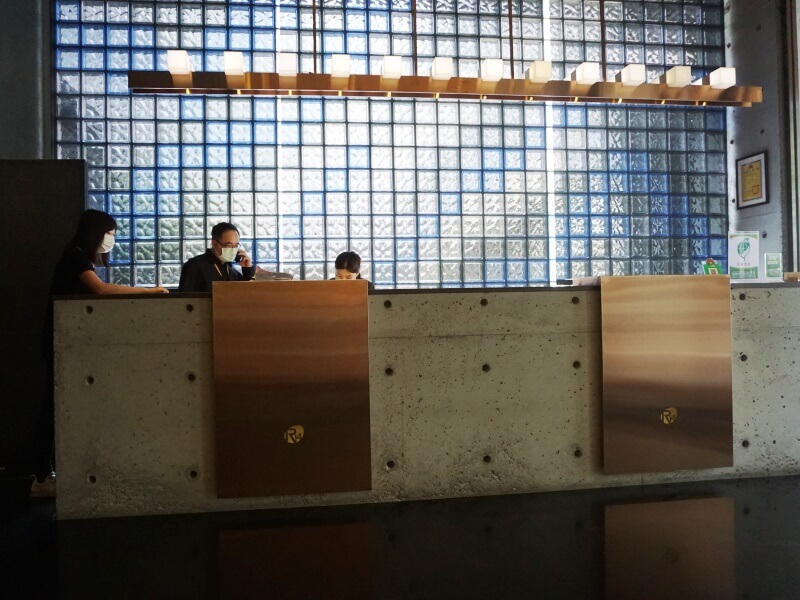
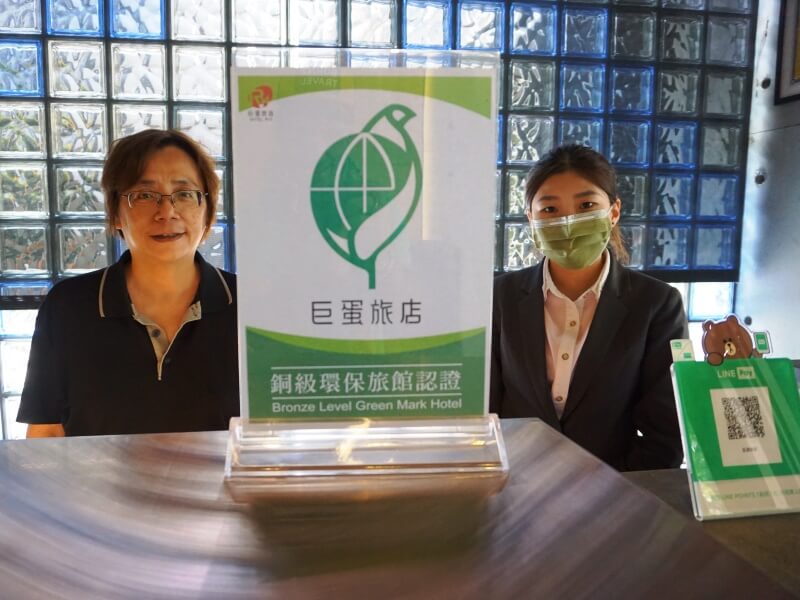
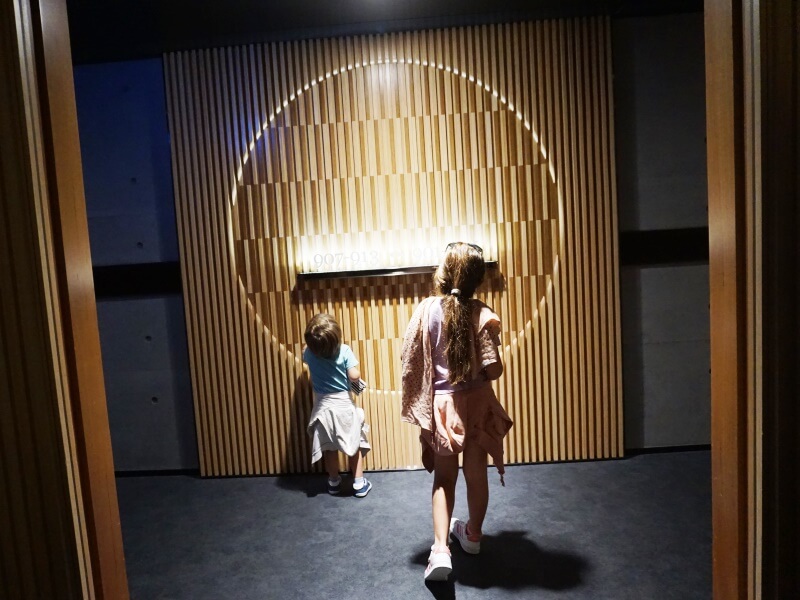
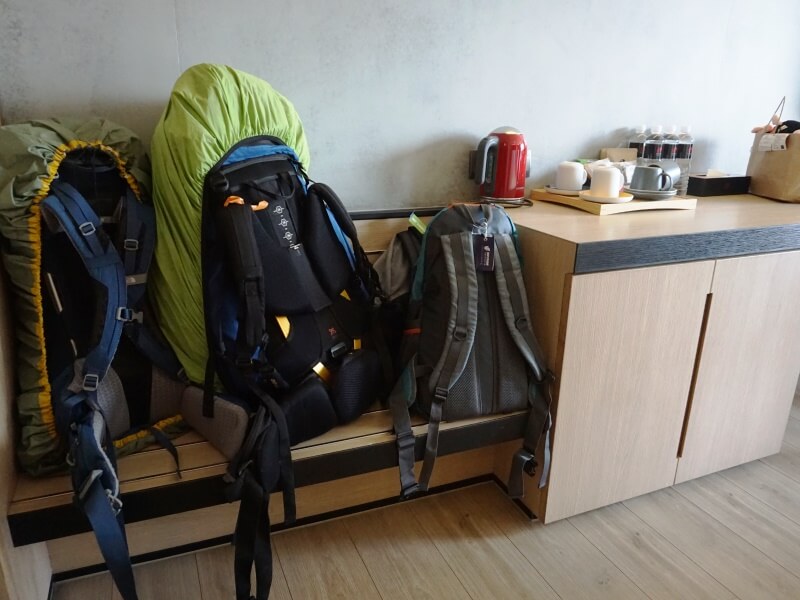
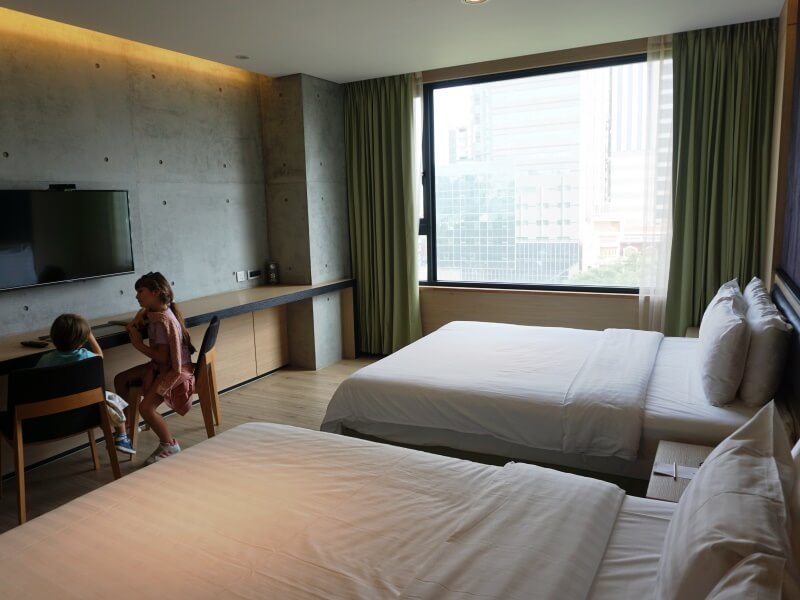

We set off to discover this wonderful city from the famous Lotus Lake.
This artificial lake is surrounded by numerous monuments, picturesque temples and pagodas, interspersed with street food stalls.
Tiger and Dragon Pavilion.
It consists of two impressive pagodas which are accessed through eye-catching statues of a dragon and a tiger. To invoke luck: enter through the dragon's mouth and exit through the tiger's.
Spring and Autumn Pavilion.
Two towers with a statue of Guanyin on the back of a gigantic, brightly decorated dragon in front.
The Wuli Pavilion which juts out onto the lake is connected by a delicate bridge which leads directly from the dragon's mouth: very suggestive.
Beiji Xuantian Shang Di Pavilion and Yuandi Temple.
It includes a 22-meter-tall statue of the Supreme Dark Sky Emperor.
Confucius Temple.
The largest in all of Taiwan and which closes this wonderful day while from afar you can hear the melancholic notes of a karaoke room where many old people take turns at the microphone singing old Chinese songs while the others practice tai chi...
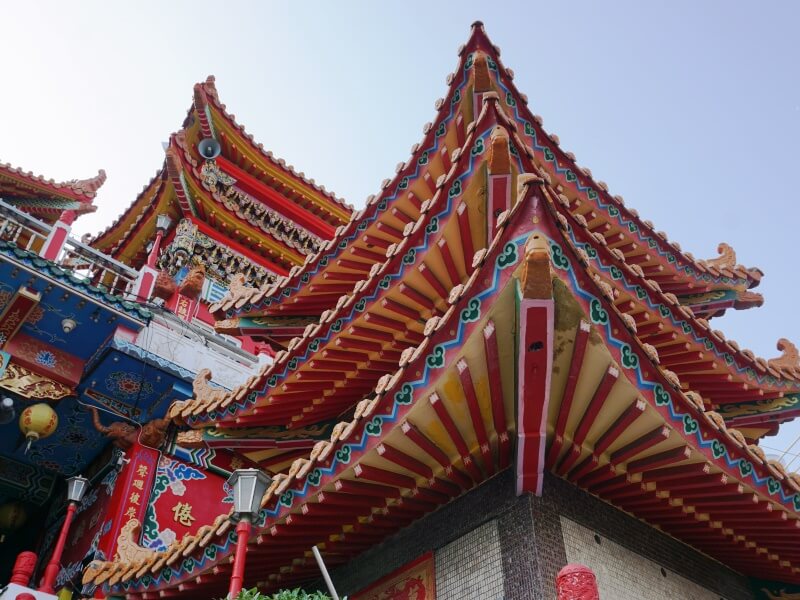
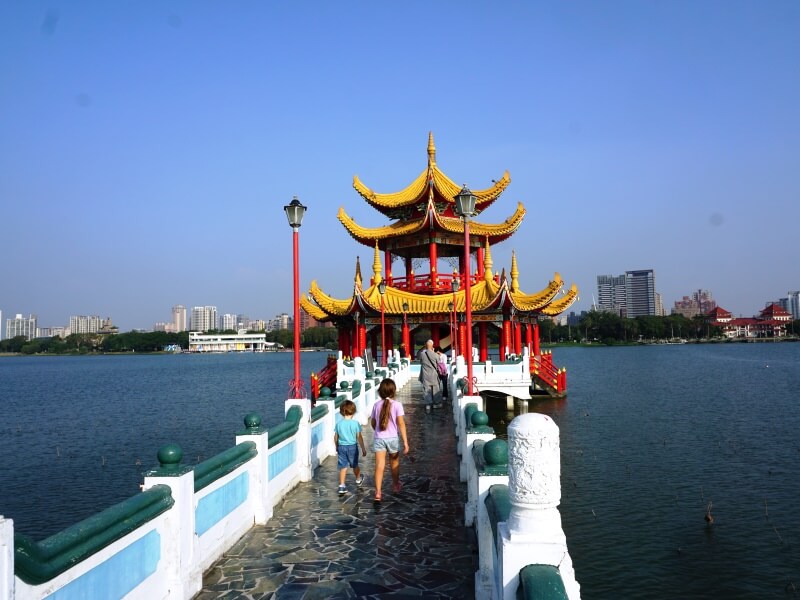
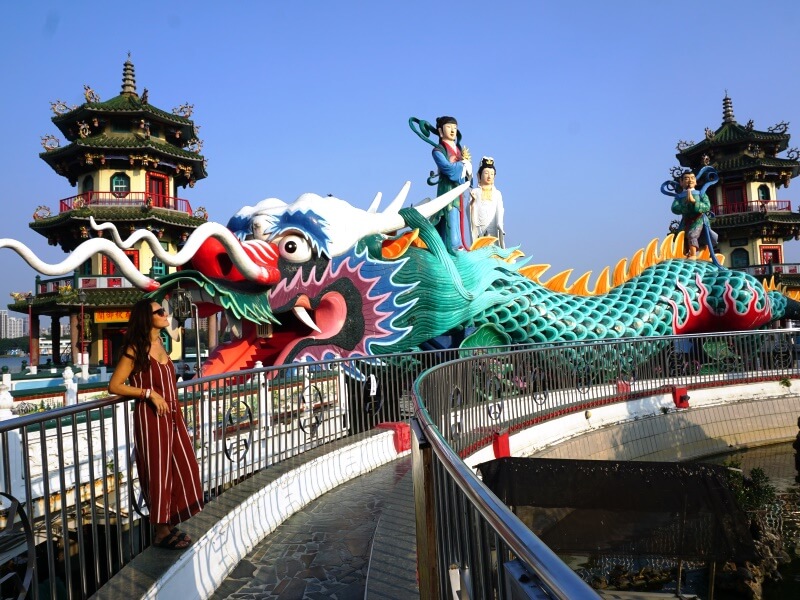
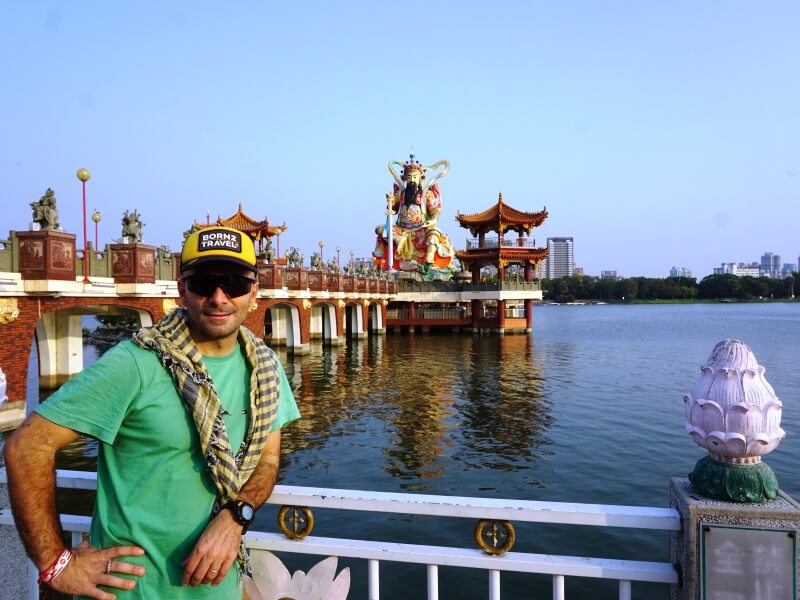
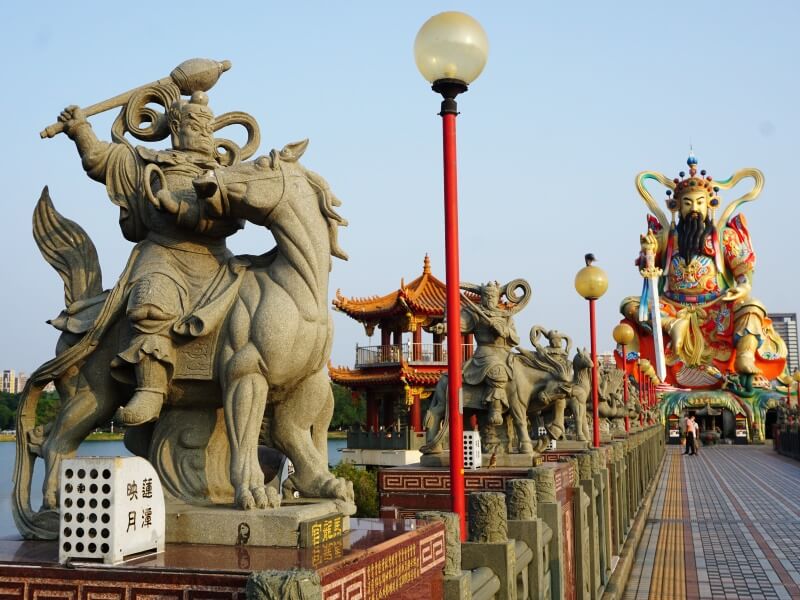
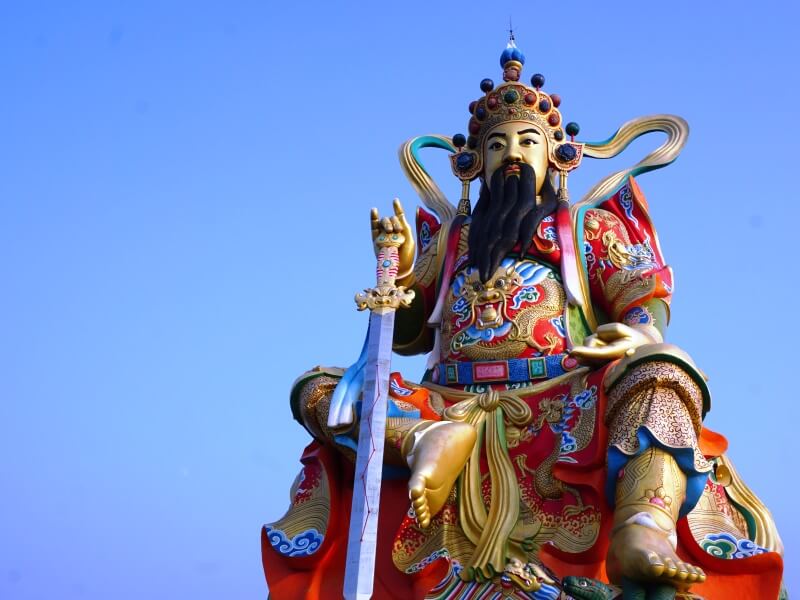
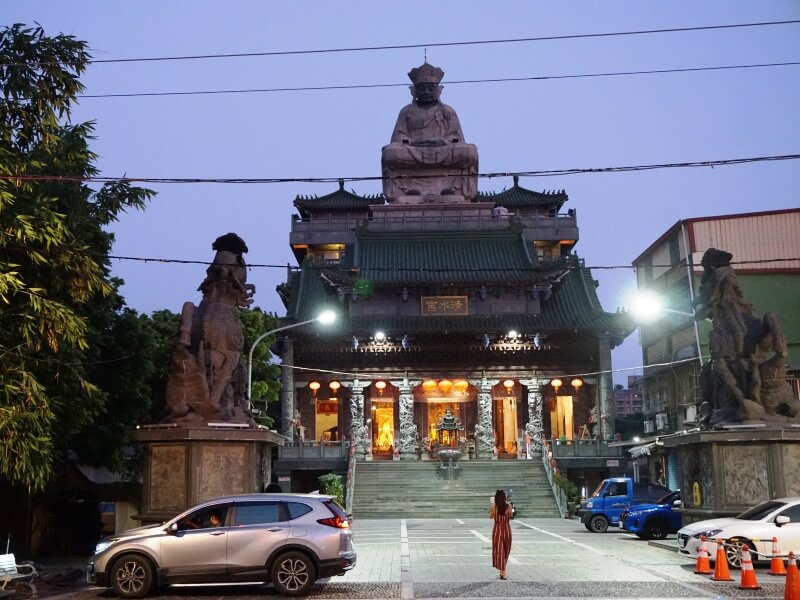
Today we reach the wonderful monastic complex of Fo Guang Shan and, to use local transport, we will eventually take: a metro, a train and a bus!
Vast complex of grandiose religious architecture with gigantic statues and where Buddhist art is exalted; the monastery is also the headquarters of the international Buddhist order founded by Master Hsing Yun, a Chinese monk who spent his life traveling and teaching his version of "humanist Buddhism”.
Today Fo Guang Shan is part monastery with several hundred monks and nuns, part educational complex with more than 1000 students, and part tourist attraction.
Free entry, you will be amazed by the many bronze Buddha statues, carvings and cultural relics.
We recommend that you begin your visit by first exploring the 5 pagodas on the right, each of which explains, through videos and exhibitions, the history of this monastic complex.
We return to Kaohsiung headed to the metro station: Formosa Boulevard, one of the most beautiful, artistic and interesting, even called "Dome of Light" due to the colored glass roof that surmounts it as well as the four majestic pedestrian entrances that, from the street, take you down At the platforms, in addition to the many small shops and restaurants, many theatrical and musical shows are also organised.
Leaving the metro you will immediately find yourself in the beautiful “Liouhe” night market, one of the many Taiwanese nocturnal wonders where we tasted the best home made dumplings of the whole trip!
The “Pier 2” art center is a lively contemporary art center that unfolds in and out of large, graffiti-covered former warehouses, right along the bank of the Love River.
Brightly colored statues line the main streets, exhibitions in the various warehouse galleries are constantly changing and there are plenty of cafés for a relaxing break.
From the port of Kaohsiung, in 10 minutes by ferry, we arrive at the small island of Cijin. We recommend renting a cycle rickshaw upon arrival (2 hours cost around 20 euros) and setting off to discover this small island.
We stopped to visit the Tian Hou temple, the oldest in Kaohsiung, founded in 1673, with the characteristic “Wangchuan” or “ship of the spirits” dedicated to the three Wang Ye deities who are believed to protect the village from diseases.
We walk along Miaocian Road, also known as "seafood street" for the restaurants that offer a vast choice of fish and shellfish and eat one of the best fried cuttlefish ever!
We continue the day following the various highlights on our Lonely Planet!
In the evening, back on the mainland, we end up wandering around the chaotic Ruifeng night market among stalls selling all sorts of street food and various games!
Here we are, after 30 minutes by train, in Tainan, the old capital of Taiwan and the oldest city on the island!
The south is a land of betel plantations, pineapple fields and sandy beaches.
We are staying at the very cute “Fun Simon Hotel”, an entire apartment with three bedrooms, a large living room and two bathrooms: all for us!
We are warmly welcomed by Fando, the owner, who shows us all the comforts of this wonderful apartment in the center as well as giving us lots of useful information on visiting his town!
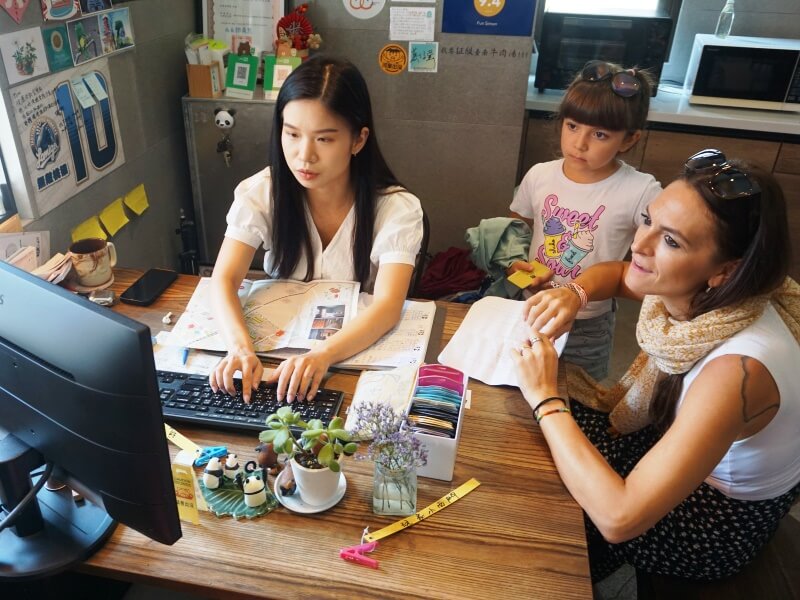
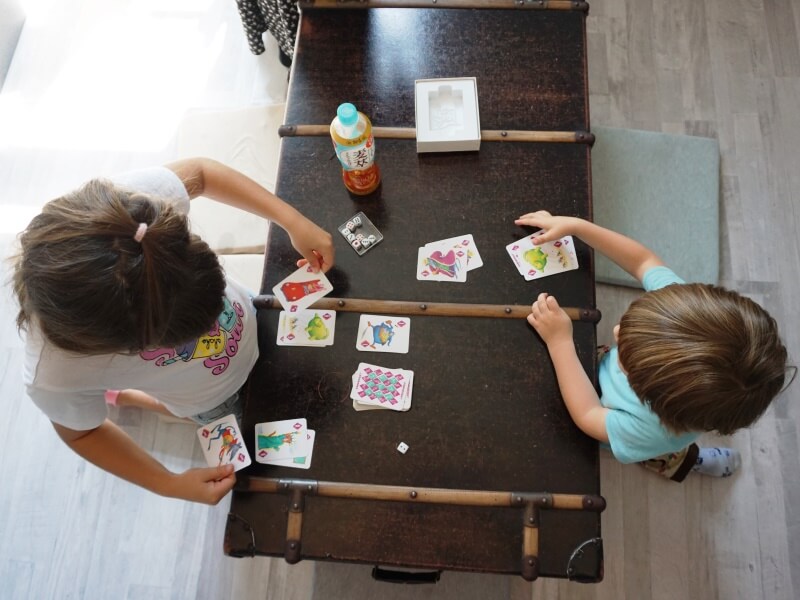
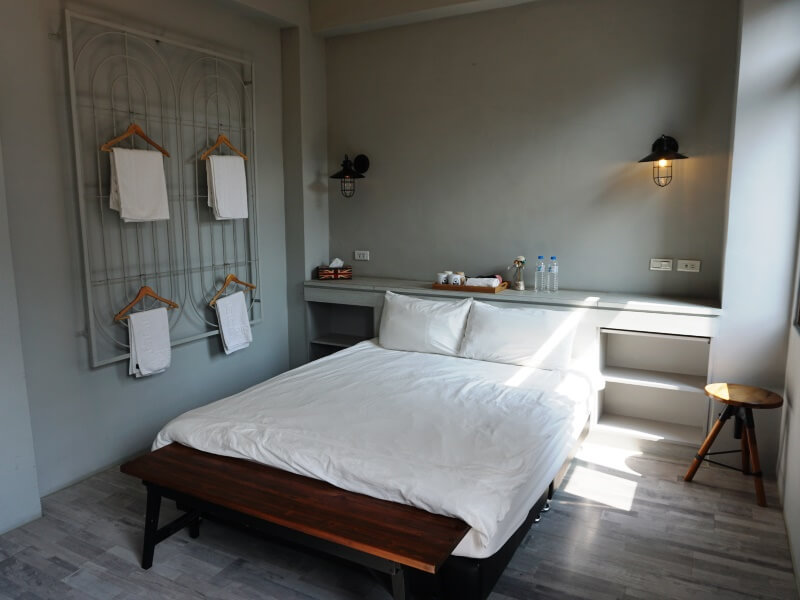
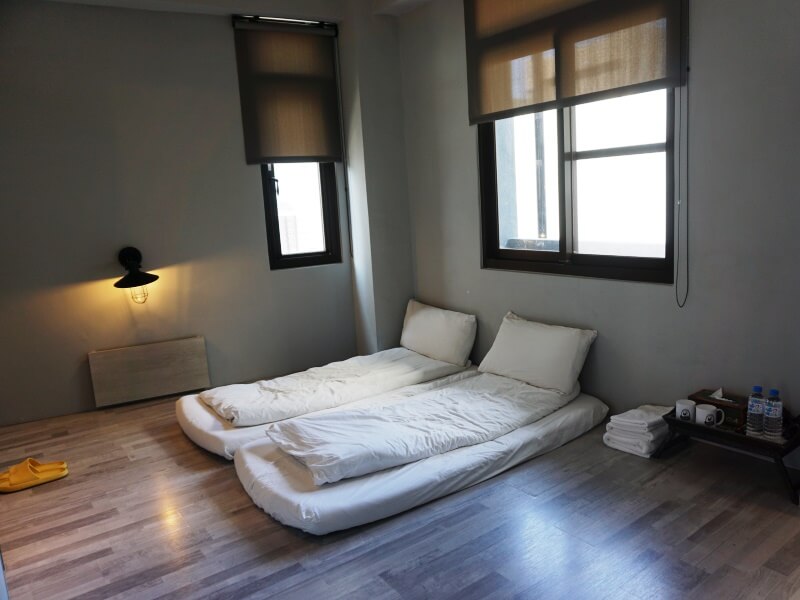
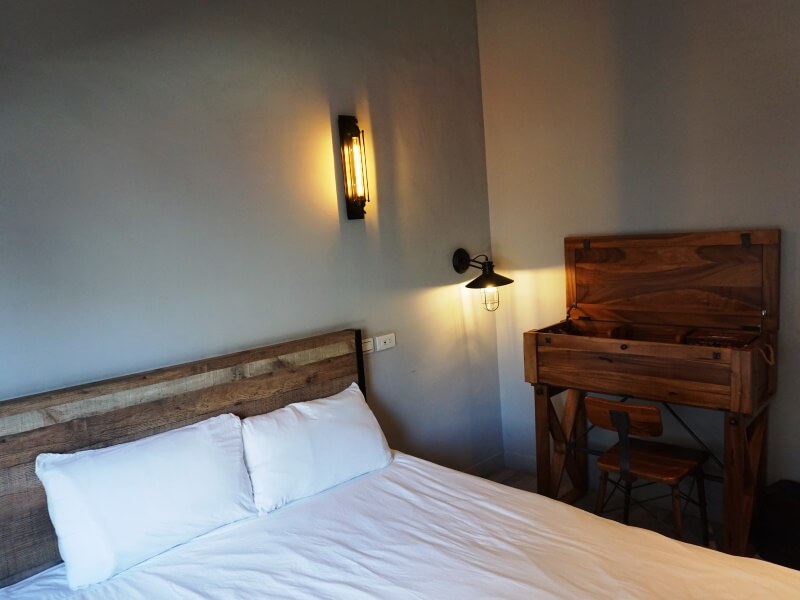
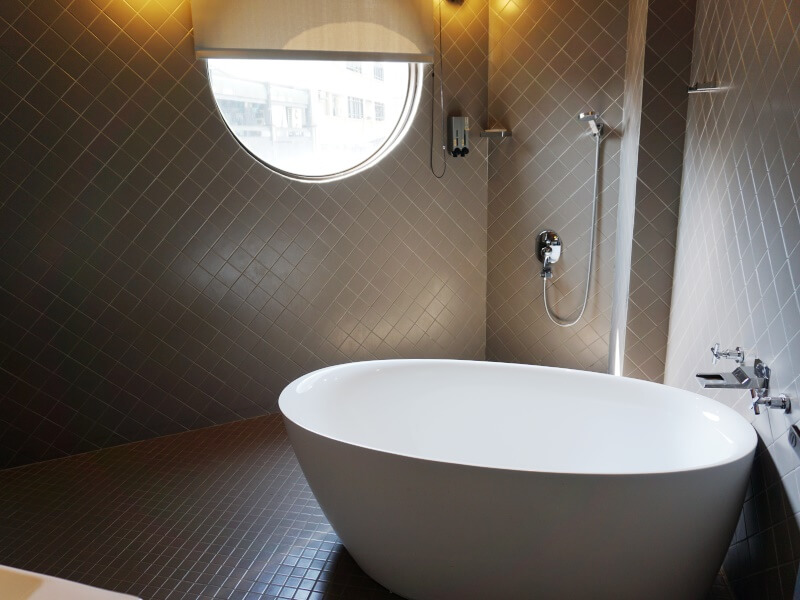
Tainan is dotted with decorated temples and interesting historical sites, think that it was the last outpost of China's Ming dynasty.
We buy a pass (around 6 euros) to visit all the main attractions in two days.
We wander among the red temples, enchanted by the many romantic views that this city can offer!
Chihkan Tower, this tower marks the site where the Dutch-built Fort Provintia in the late 1600s once stood.
The area is full of ancient temples, all well kept; we stop at the Kaiji Tianhou Temple, that of the God of War and that of Datianhou.
We taste everything that the inviting street food stalls offer and while Nora bites into a papaya she even loses her wobbly tooth! She will mean that we will ask the Taiwanese fairy for help!
We end the evening with a plate of fried noodles in a kiosk where an elderly lady calmly cooks and a very tasty pudding at another very old kiosk that has been preparing these sweets since 1939!
After a fun breakfast at one of the thousand beloved 7-Elevens, we reach the ancient Dutch settlement of Anping by bus.
Here is the old Fort Zeelandia of which little evidence remains now, an observation tower and part of the ancient external walls.
The Kaitai Tianhou Temple and the Tree House dating back to the period of the Japanese occupation when it was used as a factory and warehouse for salt are very picturesque.
Tomorrow we return to the capital where we will spend the last three days!
We travel with the High Speed Train this time too, it's quite expensive but it allows you to reach Taipei in an hour and 45 minutes. There are other cheaper ways however: traditional train or bus but, traveling with two children, we preferred to optimize our time a little more!
We will stay at Journey Town Inn Hotel, a hotel located inside a large building with few rooms but furnished with great taste and elegance, a small trendy oasis in which to rest after a day out and about and in a very strategic position to be able to best visit the city thanks also to its proximity to the metro station.
Today we visit the symbol of the city's modernity: the Taipei 101 (storeys), the fifth tallest building in the world (509 m) which stands green like a spear-shaped bamboo stem. And like a bamboo it is able to resist the fury of nature.
Thanks to its construction technique, in fact, it is flexible and is equipped with the largest shock absorber in the world, a sphere weighing over 600 tons supported by hydraulic pumps capable of counterbalancing the inclinations caused by hurricane winds at 200 km/h and earthquakes.
At the base there is a large super luxury shopping center as well as the famous restaurant: Din Tai Fung, think that its twin Hong Kong it has received a Michelin star... so the food is great but with reasonable prices and the long queue to access it confirms all this and, having received an estimated waiting time of 70 minutes, we take the opportunity to go up to the 89th floor of the skyscraper, the Observatory !
Incredible that the elevator takes only 37 seconds to cover 84 floors... and your ears notice it immediately!
The panoramic observatory offers a unique visit to the entire city.
Entrance 18 euros but it's worth it!
It's finally time to taste the "starry" delights. We order different types of Taiwanese "wonton" ravioli as well as spinach and chocolate buns, all delicious! Funny to see that some of the waiters are curious robots!
Not far away is the Sun Yat-Sen National Memorial. A postmodern reconstruction of a classic Chinese palace.
A giant bronze statue of Sun Yat-Sen overlooks the main entrance where you can witness a solemn changing of the guard every hour.
We end the evening in another historic night market in Taipei: Raohe.
Classic market full of life and street food.
Perfumes, fun chaos but with a peculiarity: here there is a small street food kiosk: Fuzhou Black Pepper Bun which even received a Michelin star!
They sell small buns (sandwiches) with marinated and very spicy pork (prices 1.80 euros each)!
What could be a forever memory of this trip? Of course! A tattoo!
Here we are in the Zhongshan area in the studio Cute n’ Cool Tattoo with the great Taiwanese artist Jones, his wife Emma and assistant Nemo.
We spend the entire afternoon with them while Jones tattoos the acronym of our life on us! YOLO!
Not far away is the Ningxia night market. Among the thousand stalls there is the famous Yuen Huan Pien Oyster Egg Omeltte (also 1 Michelin star) which has been delighting its customers for 60 years with onion and oyster omelettes... not my favourite!
Not far away is the Ningxia night market. Among the thousand stalls there is the famous Yuen Huan Pien Oyster Egg Omeltte (also 1 Michelin star) which has been delighting its customers for 60 years with onion and oyster omelettes... not my favourite!
They are divided by geographical areas: ranging from the desert to Australia via the Arctic, the rainforest up to Southern Africa!
With the panoramic cable car we go up to the magnificent Chih Nan temple where you will feel like you are in another era! This Taoist temple, partly due to its position and partly due to its objective beauty, left us speechless!
We continue to Moakong to enjoy one of the most beautiful sunsets of the entire trip while sipping tea in one of the many tea houses with panoramic views.
謝謝台灣
Error: No feed found.
Please go to the Instagram Feed settings page to create a feed.